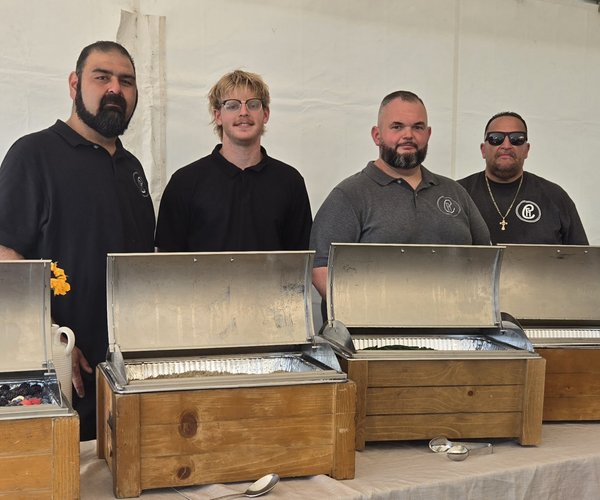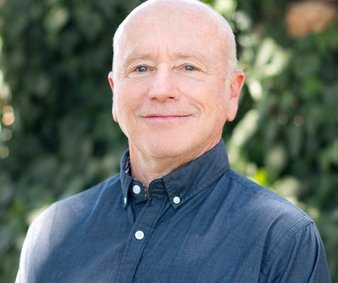HELP PREVENT SPREAD OF FLU
• Stay home when you are sick.
• Cover your coughs and sneezes with your elbows, sleeves, or with a tissue. Dispose of the tissue after each use. Coughing into hands can spread germs to others.
• Wash your hands often with soap and water or use an alcohol-based hand sanitizer.
• Avoid touching your eyes, nose and mouth, even after washing your hands.
The influenza virus, largely spurred by a resurgence of swine flu, continues to claim more lives in California as public health officials increase their efforts to vaccinate more of the population.
At the same time that the flu death toll mounts, the California Department of Public Health announced that the state has been seeing higher rates of pertussis, more commonly known as whooping cough, and that one infant has died from the virus.
The number of confirmed influenza related deaths in the state has increased by 56 this week to a total of 202 confirmed deaths for the season, the CDPH reported. Four of the 202 are pediatric deaths. There are an additional 41 deaths under investigation, not yet confirmed.
Stanislaus County has confirmed 12 influenza-related deaths so far this season, and has one of the higher rates in the state. Kinisha Campbell, a manager with the Stanislaus County Health Services Agency, said Stanislaus County historically has low vaccination rates, which could account for the higher rate.
The 202 confirmed influenza-associated deaths this season have been reported by the following jurisdictions: Alameda (5), Contra Costa (5), El Dorado (2), Fresno (15), Glenn (1), Humboldt (1), Imperial (1), Kern (8), Kings (3), Lake (1), Lassen (1), Long Beach (3), Los Angeles (26), Madera (2), Marin (2), Mendocino (2), Merced (4), Monterey (2), Nevada (1), Orange (8), Riverside (6), Sacramento (21), San Bernardino (15), San Diego (17), San Francisco (3), San Joaquin (6), San Luis Obispo (1), San Mateo (4), Santa Barbara (2), Santa Clara (10), Santa Cruz (1), Shasta (1), Siskiyou (2), Solano (1), Sonoma (4), Stanislaus (12), Tulare (1), Tuolumne (1) and Ventura (1).
The total number of deaths reported for the entire 2012-2013 influenza season was 106.
The spike in flu deaths this year is largely from a resurgence of the H1N1 virus, also known as swine flu. Swine flu differs from more typical influenza viruses in that it tends to cause more illnesses in children and young adults that it does in older individuals, though all age groups are susceptible. The complications from H1N1 can pose more health risks that seasonal flu. Health officials have reported seeing swine flu cases result in viral pneumonia, as opposed to bacterial pneumonia, which can occur with seasonal flu. Viral pneumonia is harder to treat.
Recent studies have also shown that the H1N1 virus is more likely to bind to the trachea, bronchi and bronchioles in the lung and sometimes to the intestines. Seasonal flu usually binds to the nostrils.
The 2009 H1N1 pandemic saw millions of people sickened by the virus worldwide and caused an estimated 150,000 deaths.
With the upswing in deaths and hospitalizations from the flu, the CDPH and local health agencies are increasing their efforts to spread the message to get vaccinated. Unlike in 2009, a vaccine that protects against the H1N1 virus is widely available.
"This influenza season continues to be a severe one as the increasing number of influenza-related deaths indicates," said Dr. Ron Chapman, director of the CDPH. "Once again I urge all Californians to get vaccinated, because it is the best defense against influenza."
People can still receive the flu vaccine to be protected this year. Typically, the flu season peaks in February and March in Stanislaus County and the flu vaccine only takes two weeks to become fully effective.
Those at highest risk - the elderly, pregnant women, infants, or those with other health conditions - who show flu symptoms should contact their physician immediately in order to get the most effective treatment. Symptoms include fever, cough, sore throat, runny or stuffy nose, muscle or body aches, headaches and fatigue. Symptoms for H1N1 are similar to seasonal flu, but can also include bouts of diarrhea and vomiting and a more persistent cough. Lab tests are the only way to differentiate between H1N1 and seasonal flu.
The CDPH is also seeing an increase in whooping cough cases this season. Just recently a Riverside County infant less than six months of age died from the virus, marking the first confirmed death from whooping cough in the state since 2010.
"This baby's death is a tragedy for the family, and for California as a community, and this is a preventable disease," said Chapman. "Preventing deaths in infants by ensuring that all pregnant women get vaccinated is our primary goal in pertussis control. When pregnant women are vaccinated, the immunity they develop against pertussis is passed to their infants and helps protect infants until they are old enough to be vaccinated themselves. Young infants are at the greatest risk of severe or fatal pertussis."
Pertussis is cyclical with peaks in incidence every 3 to 5 years. California experienced a pertussis epidemic in 2010 when more than 9,100 cases, including 10 deaths were reported. That's more cases than had been reported in any year since the pre-vaccine era. After declining steadily from the peak in 2010, monthly case reports began increasing in mid-2013. Of the cases in 2013, 83 percent of reported pertussis cases were children less than 18 years of age. Of these pediatric cases, 12 percent were infants less than six months of age.
For infants, pertussis vaccinations typically start at two months of age, but adequate protection doesn't occur until about six months of age.
"This serves as a sad reminder that illnesses like whooping cough are still very much with us, and immunizations are the first line of defense," said Dr. Cameron Kaiser, public health officer for Riverside County Department of Public Health. "We strongly encourage pregnant women to get vaccinated, all parents to vaccinate their children on time, and for adults to keep current with their booster shots to reduce the spread of the disease."
It's important that both children and adults are up-to-date on their immunizations. Booster shots for pertussis are critical because, unlike some other vaccine-preventable diseases like measles, neither the pertussis disease nor vaccine confers lifelong immunity.
To avoid the spread of pertussis, CDPH recommends that:
• Pregnant women receive a pertussis vaccine booster during the third trimester of each pregnancy, even if they received it before.
• Infants be vaccinated against pertussis as soon as possible. The first dose is recommended at two months of age. Young children need five doses of pertussis vaccine by kindergarten (ages 4-6).
• California 7th grade students receive the pertussis vaccine booster as required.
• Adults receive a pertussis vaccine booster, especially if they are in contact with infants or are healthcare workers who may have contact with infants or pregnant women.
The symptoms of pertussis vary by age. For children, a typical case of pertussis starts with a cough and runny nose for one to two weeks. The cough then worsens and children may have rapid coughing spells that end with a whooping sound. Young infants may not have typical pertussis symptoms and may have no apparent cough. Parents may describe episodes in which the infant's face turns red or purple. For adults, pertussis may simply be a cough illness that persists for several weeks.
People should check with their primary care provider or local pharmacy for flu and whooping cough vaccine availability. Flu vaccinations are offered at the Stanislaus County Public Health Department for $10 per child (6 months through 18 years) and $25 per adult. Flu vaccines are provided to the public during the hours of 10 a.m. to 6:30 p.m. Tuesdays and Thursdays and 8 a.m. to 4 p.m. on Wednesdays and Fridays at the Public Health building located at 820 Scenic Drive in Modesto. No appointments are necessary.









